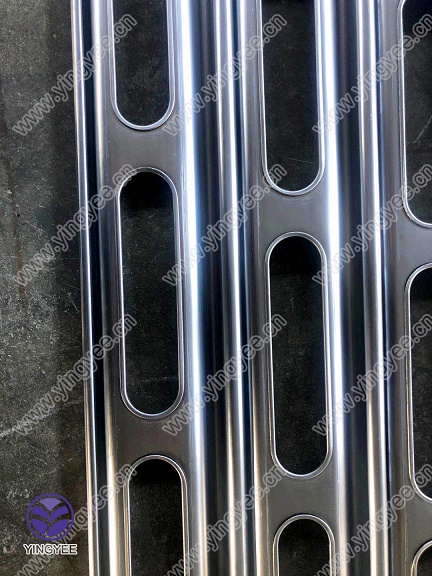
The Evolution and Technology Behind Cable Tray Making Machines
In today’s rapidly advancing industrial landscape, the importance of efficient infrastructure for electrical installations cannot be overstated. At the heart of these installations is the cable tray, which serves as a vital component for supporting and managing electrical wiring systems in a variety of settings, from industrial plants to commercial buildings. The demand for high-quality cable trays has led to significant advancements in the machines responsible for their production. This article discusses the evolution, technology, and benefits of cable tray making machines.
Understanding Cable Trays
Cable trays are designed to support insulated electrical cables. They come in various designs, including ladder, perforated, and solid bottom types, all tailored for specific applications and environments. The primary purpose of cable trays is to provide a safe and organized pathway for electrical wiring while ensuring ease of maintenance and accessibility. As electrical loads in modern installations become increasingly complex, the need for robust and reliable cable trays has surged.
The Role of Cable Tray Making Machines
Cable tray making machines are specialized equipment designed to produce cable trays efficiently and precisely. These machines can handle various materials such as steel, aluminum, and fiberglass, catering to both standard and custom cable tray requirements. The evolution of these machines has been marked by significant technological advancements, which have transformed the manufacturing process.
Evolution of Cable Tray Making Machines
Historically, cable tray production was a labor-intensive process requiring skilled workers to manually shape and assemble trays. As industries began to scale up production, the need for automation became apparent. The introduction of cable tray making machines revolutionized the manufacturing landscape, enabling companies to produce trays in high volumes while reducing labor costs and improving quality.
Early machines were rudimentary, focusing primarily on cutting and bending metal sheets. However, as technology has progressed, modern machines are equipped with advanced features such as programmable logic controllers (PLCs), hydraulic systems for precise bending, and integrated welding technologies. These advancements not only enhance production speed but also ensure that the produced trays meet stringent quality and safety standards.
Modern Technology in Cable Tray Manufacturing

Today’s cable tray making machines are marvels of engineering that incorporate numerous innovations. Some of the key technologies include
1. CNC Technology Computer Numerical Control (CNC) technology allows for precise automation of cutting and bending processes. This leads to consistent quality and enables manufacturers to create intricate designs that cater to specific project requirements.
2. Robotic Integration The incorporation of robotics in cable tray production has streamlined processes such as welding, stacking, and packaging. Robots can work tirelessly and with precision, further improving efficiency.
3. Advanced Materials Handling Modern machines often come equipped with automated systems for materials handling, ensuring that raw materials are loaded, processed, and finished products are transported without human intervention. This reduces the risk of injury and enhances workflow.
4. Energy Efficiency With a growing emphasis on sustainability, many manufacturers are implementing energy-efficient designs into cable tray making machines. This not only lowers operational costs but also minimizes the carbon footprint of production processes.
Benefits of Advanced Cable Tray Making Machines
The advancements in cable tray making technology come with a myriad of benefits. Manufacturers can achieve significantly higher production rates while maintaining product quality. The ability to customize designs helps meet client-specific requirements, allowing for tailor-made solutions in diverse sectors.
Furthermore, the automation of production reduces the likelihood of human error, ensuring that the trays produced are consistent and reliable. Enhanced integration of quality control systems within these machines enables real-time monitoring of production metrics, further elevating standards.
Conclusion
The development of cable tray making machines marks a significant milestone in the electrical installation industry. As the demand for efficient, safe, and scalable electrical infrastructure continues to grow, these machines will play an increasingly crucial role in meeting those needs. With ongoing innovations and advancements, the future of cable tray manufacturing looks promising, paving the way for enhanced electrical management solutions that contribute to the overall efficiency and safety of electrical systems worldwide. As technology continues to evolve, so will the capabilities of these machines, leading to even greater possibilities in the realm of electrical installations.